Which growing medium is best suited for cannabis?
The roots of your weed plant need a medium to root in to provide the plant with nutrients for growth and flowering. Such weed growing mediums can be earth, coconut substrate, clay granulate or rock wool. But how do you now know which medium is the right one for you? In the following, we will bring you closer to the advantages and disadvantages of the respective cultivation medium. In the end, the decision is yours!
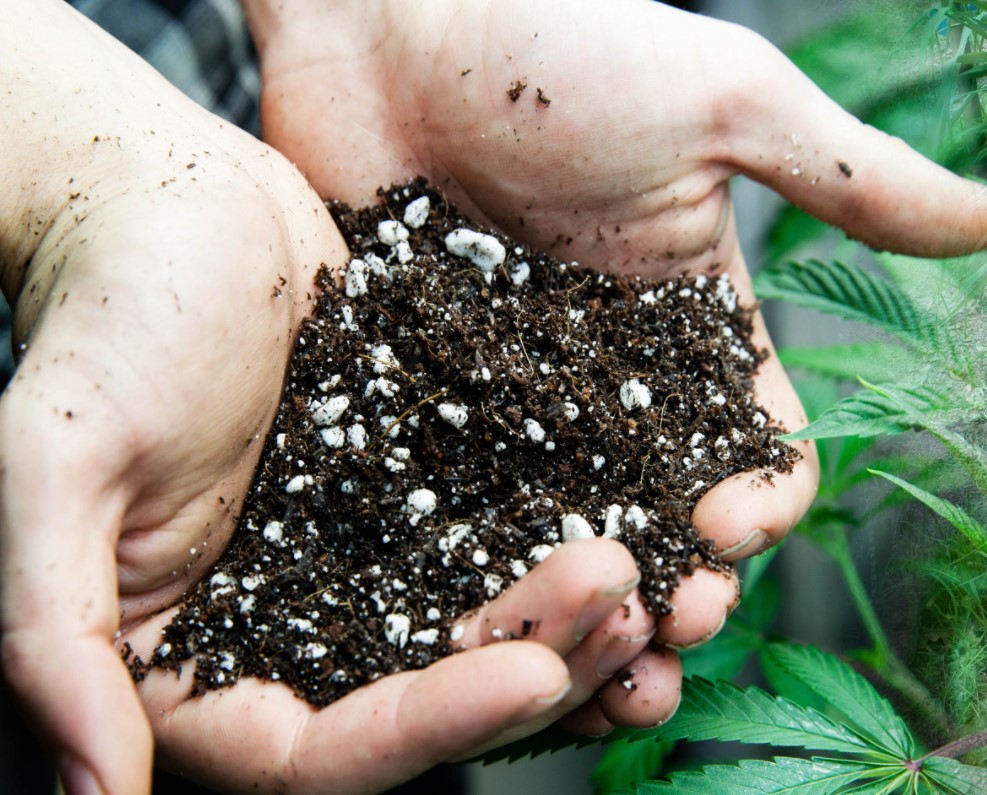
Weed growing medium – Soil
If you can’t plant your weed plants directly in the ground for whatever reason, you’ll probably need to buy specially packaged soil and suitable planters to grow in.
If you want to cultivate cannabis organically, it is best to use high-quality organic soil mixtures. Cannabis has certain requirements when it comes to the soil as a cultivation medium. The nature and the physical properties are decisive. Therefore, not every potting soil from the hardware store is necessarily suitable for growing cannabis.
The optimal structure, which ensures healthy root growth, which supplies the plant with nutrients and water, depends on the soil density, the size of the soil particles and the consistency. The cannabis plant grows best in soils with a medium structure of loam, silt and sand. A good soil structure also goes hand in hand with intact soil life, which in turn protects against pathogens. Such a growing medium offers the best properties for successfully growing cannabis.
Growing weed in soil.
The degree of acidity (pH value) and the nutrient content are the most important factors that ensure optimal soil conditions. Furthermore, the drainage behaviour and the proportion of organic materials are important physical properties when growing cannabis. Such organic materials are for example compost, peat moss, coconut fibres or charcoal.
An optimal proportion of organic materials contributes to healthy root growth, determines the acidity of the earth and ensures that the earth is loose and light and can therefore hold moisture well. The clear advantage of soil as a cultivation medium is that its organic components act as a buffer for fertilizers and existing nutrients and thus there is an interaction between the medium and water.
In order to be able to optimally absorb the nutrients contained in the soil, a pH value of 6.5 is best. Otherwise, various nutrient deficiencies can occur. If the growing medium is too acidic, the plant will grow less, the flowers will be smaller and the leaves will curl up. If the pH value is too alkaline, however, salts accumulate in the soil, which disrupts the plant’s water absorption.
Various companies are now producing special soil mixes for growing cannabis and it can be difficult to decide. Basically, you should be aware of whether you want to work with organic or mineral fertilizer and how your soil mix should be pre-fertilized, organic or mineral? Here you can draw a dividing line and then you can simply try out a wide variety of soil mixes. The structure of the growing medium, which provides your plants with enough oxygen and water, should be of good quality.
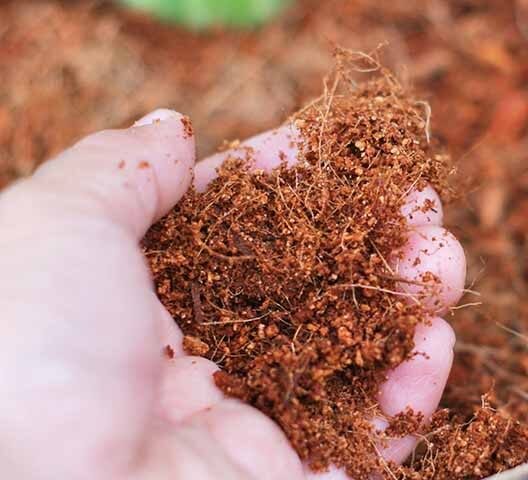
Weed growing medium – Coconut substrate
At first, the fibres of the coconut shell were a pure waste product until their physical properties for horticulture were recognized in the early 1990s. This 100% organic growing medium is a very good alternative to rock wool and peat moss. Coconut substrates are more sustainable, can be easily reused and have been shown to suppress harmful pathogens. They are also very suitable for hydroponic cultivation.
Growing weed in Coconut Coir
Coconut substrates consist of coconut chips, fibres and dust, which, due to their different particle sizes, make the substrate more stable. It also will ventilate adequately, store water optimally and only compact the soil minimally when it dries. Due to the low compression, air pockets form in the soil, which offers more space for roots.
This property contributes to increased root formation, which leads to increased uptake of nutrients and water. Therefore, the plant is generally stronger, grows faster and the flowers are usually more compact and larger. In addition, coconut substrates have a natural pH value of around 5.7 to 6.5. It also has a high cation exchange capacity, which describes the ability of a substrate to store and release nutrients. Coconut substrate dries out very quickly and therefore has to be watered more often. The pH value has to be measured each time, as it does not have the same buffering effect as soil.
You should be careful with the quality of coconut substrates. These should be washed to rinse out excess sodium and chloride. Then buffered, i.e. pretreated with a calcium fertilizer (calcium nitrate) to improve the potassium-calcium exchange. Untreated coconut fibre contains high amounts of sodium and potassium, which can lead to calcium and magnesium deficiencies.
They are available in pressed bricks that are easy to transport and can be stored to save space.
For repeated use, the growing medium must be washed thoroughly after each pass.
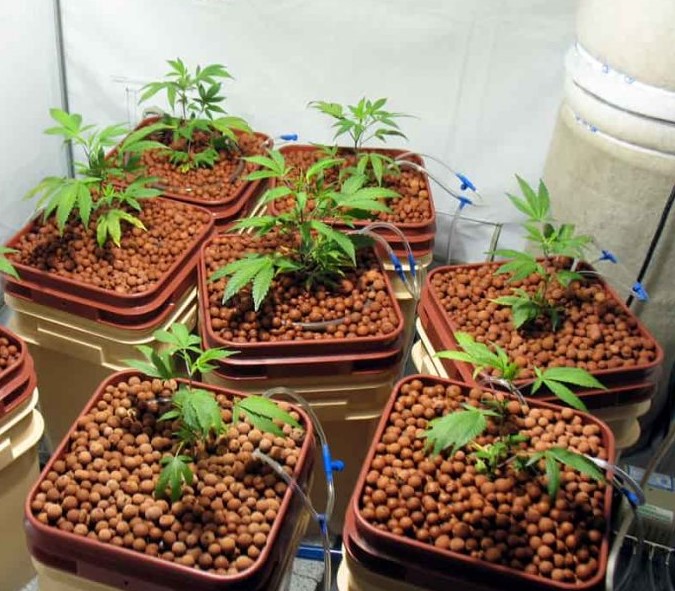
Weed growing medium – Clay granules / expanded clay
Clay granules are small balls made of fired clay that represent an inert growing medium and are used in hydroponic growing systems. An inert growing medium can neither take nor add nutrients to the nutrient solution. This form of cultivation is ideal for growers who want to control the nutrient supply themselves over the entire cultivation period, and this with every watering process.
Since clay granulate can only store a little moisture, it is mainly used in closed or circulatory systems. These are also called recirculating systems, as the nutrient solution is collected and fed back to the plants via a pump, so there is no need for a drain. The roots are optimally supplied with oxygen.
Growing weed in expanded clay pebbles
Due to the high oxygen uptake capacity, the cultivation cycle is shortened enormously, which can lead to several harvests per year. Another advantage that results from the good oxygen supply is that there is no waterlogging or root rot.
As an inert growing medium, clay granulate has a neutral pH value and therefore does not affect the water-nutrient mixture. Before the planned use, however, the granulate must be cleaned and the pH value stabilized. This process must be repeated after each cycle to rinse out the mineral salts, which means that the clay granules can be reused as often as required.
The small clay balls, also known as clay pebbles, can be used as the bottom layer (approx. 3-5 cm) at the bottom of the pot when cultivating with soil so that the irrigation water can drain off better and there is no waterlogging.
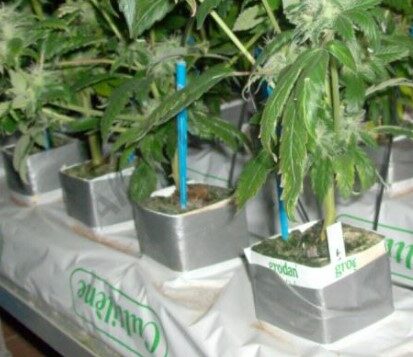
Weed growing medium – Rock wool
Stone wool is known from the construction industry, where it is used as heat, fire and noise insulation and has more water-repellent properties. For plant breeding, a certain rock wool variant was only developed as a cultivation medium in the 1970s, which can store and release much more water.
Stone wool is suitable for hydroponic cultivation with drip irrigation. Like clay granules, it is an inert growing medium and must also be stabilized before use. This is done by soaking in a solution with a pH of 5.1 for 24 hours. The rock wool is then flushed through with a light water-nutrient solution with an EC value of 0.5-0.6. For the further cultivation process, the plants should be watered with a water-nutrient solution with a pH value of 6.1.
Rock wool growing medium
The growing medium is available in various shapes and sizes, as mini blocks for seeds and cuttings, which after rooting can be inserted into larger culture blocks and finally placed on Rockwool mats or planted in other growing media. The blocks and mats are encased in plastic. This way the moisture stays in the medium better and it is protected from algae and infections. Since rock wool is sterile and 100% germ-free, there is hardly any risk of disease or pest infestation.
The dust and threads are harmful to humans. If these are inhaled, they damage the lungs and are also suspected of being carcinogenic. Therefore, when handling rock wool, a mask and gloves should be worn, as well as long sleeves, as the dust can also cause skin rashes.
Before re-use, the rock wool must be dried, the stems and roots torn out and the medium sterilized with a three percent hydrogen solution for 24 hours. Then it is rinsed thoroughly.
Even if you can, reuse rock wool, it is not environmentally friendly! The material is neither compostable nor recyclable. The production also consumes a lot of resources and energy.

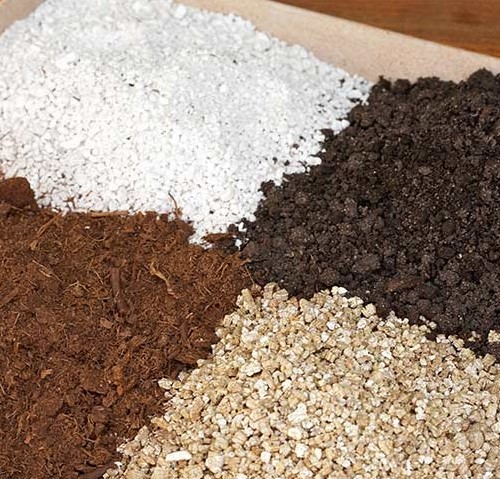
Eхcellent work!